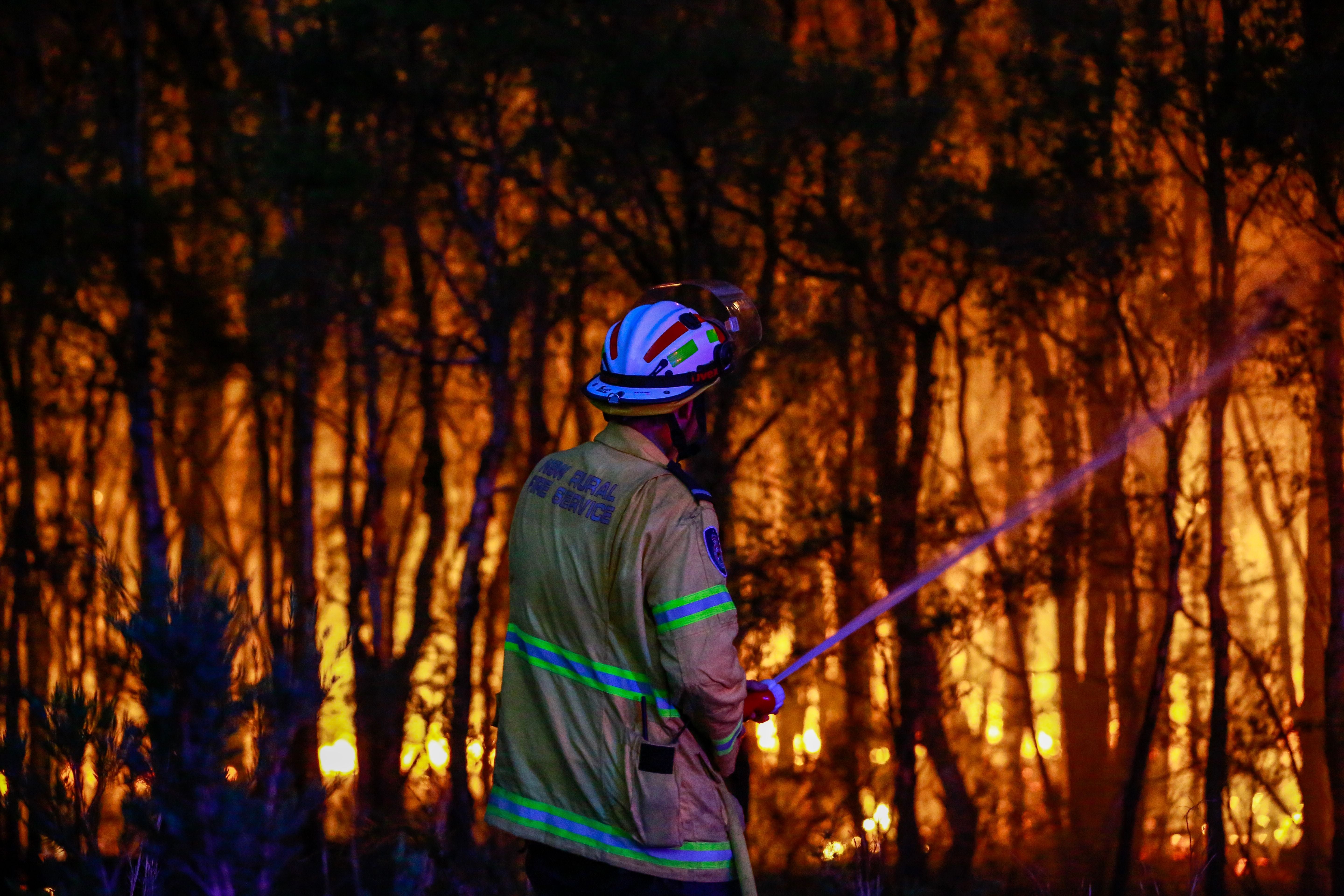Thick smog engulfs Sydney as firefighters race to tackle huge bushfire from air
Grey clouds obscure iconic Opera House and Harbour Bridge as Australia hit by dual disaster of bushfires and floods
Sydney’s air quality plummeted to one of the world’s worst levels on Tuesday, as bushfires raged in northwestern parts of Australia while the northeast continued to battle floods.
Grey clouds obscured the iconic Opera House and Harbour Bridge with air quality index hitting 161, a level considered unhealthy for everyone, in areas north of Sydney’s downtown, after 5pm local time.
This brought Sydney, a city otherwise known for its blue skies and pristine beaches, to a par with New Delhi, one of the world’s most polluted capitals.
Authorities urged people with respiratory conditions to seek immediate help if necessary and residents were asked to avoid prolonged exposure to outside air.
“Take precautions, such as staying indoors and closing windows,” the Rural Fire Service (RFS) said.
The smoke, which spread over hundreds of miles, blew into the city from the bushfires raging in the Pilliga forest, in New South Wales, some 260 miles away, since 8 December.
Firefighters raced to tackle the huge bushfires from the sky with aerial water bombing on Tuesday.
The fire crisis was raised to emergency level on Monday when it began threatening homes. On Tuesday, storms moved into the area, creating erratic fire conditions. However, the alert was lowered later to a “watch and act” level.
But the fires, which have already burnt through an area the size of Greater London – about 336,000 acres – went on to rage as authorities warned of worse as summer peaked.
With record temperatures worldwide – 2023 is set to be the hottest year in human history – concerns are high in Australia about a repeat of the 2019-2020 “Black Summer” fires that destroyed an area the size of Turkey and killed 33 people.

The impact of the fires goes beyond environmental concerns, affecting industry too. Energy company Santos has suspended work on a gas project northwest of Sydney.
“The fires in the Pilliga area are of enormous concern,” a company spokesperson said in a statement.
“While there is no risk to, or because of, our facilities, we have shut our operations for the time being.”
Preparing for the season, Australia has recently acquired its biggest-ever fleet of firefighting aircraft, capable of carrying 15,000 litres of water or retardant, on a permanent lease.
As bushfires scorch the western half of the country, the eastern parts of Australia continue to grapple with the impacts of record rainfall, which have flooded Queensland.
The storms, triggered in part by ex-tropical cyclone Jasper, produced nearly 20in of rainfall. In some areas, rainfall exceeded 60in, which is the amount of rain that normally falls in that part of Australia in an entire year.
The flooding prompted Cairns airport to temporarily shut on Monday as crocodiles were spotted walking down streets in north Queensland.
Join our commenting forum
Join thought-provoking conversations, follow other Independent readers and see their replies
Comments
Bookmark popover
Removed from bookmarks